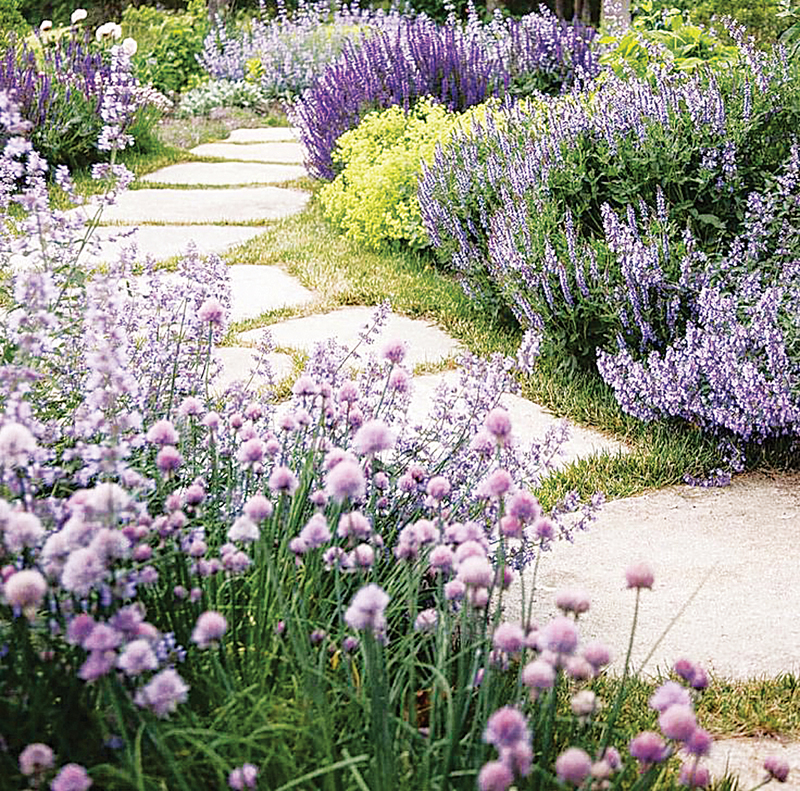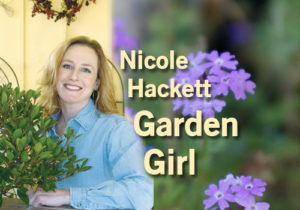
Questions – like flowers – abound this time of year

 CLAYTON, CA (Apr. 20, 2024) — Spring is in full swing at the nursery, leading to lots of questions.
CLAYTON, CA (Apr. 20, 2024) — Spring is in full swing at the nursery, leading to lots of questions.
What could be eating my new veggie and herb installs? Why are my lemon leaves so yellow? The best bee-friendly plants to grow in full sun? Groundcover ideas that tolerate foot traffic? Flower that bloom all summer in containers?
Let me provide some answers.
Young, tender shoots of veggie starts and herbs are a favorite of a couple popular pests. The pincher bug, aka earwig, is the most common. This nighttime feasting culprit can take down a cucumber or squash by daylight.
Sluggo Plus has been proven to eliminate the problem organically. It’s made from iron sulfate and Spinosad. Both ingredients are registered for use in our vegetable gardens. Sprinkle a few pellets around new installations. A little Sluggo Plus goes a long way. Reapply every 7-10 days until your plants are of substantial size.
Lemon trees may experience yellow leaves during the spring, because the plants are stressed from the fruit they are maturing and the flowers they are about to get. Young to adolescent citrus trees are very demanding. They are using lots of energy, and we need to provide extra nutrients to these plants so they can give fruit to us.
A lemon tree with lots of bright yellow leaves lacks nitrogen. Nitrogen is the first number on a fertilizer label. A plant’s size will give you guidance for the dose of fertilizer. A lemon tree with light yellow leaves and green veins needs iron. Water-in granular iron. Liquid iron is less potent and you’ll need another application after a month or so.
Pleasing the bees
We need bees and, thankfully, so many of us are interested in planting flowers for the bees. Nepeta is a huge family of sun-loving, low-water perennials with a flower that a honeybee cannot resist. The great thing about nepeta is that there is a size plant for any application. Most nepeta has periwinkle-colored flowers on gray foliage.
Rosemary is also very bee friendly. Grow in containers to control its size. Rudbeckia, echinacea and sedum all have easily accessed pollen, which is perfect for bees. All salvia and lavender are favorites of bees once they’re blooming.
Lawn replacement
As more and more folks replace their lawns, they desire low-growing plant material that can tolerate traffic.
Dymondia hit the scene more than a decade ago, and it is a proven favorite for this type of application. Dymondia grows nearly flat with gray, blade-shaped leaves with white undersides. Thyme is another good choice. Myoporum is a great consideration in a less walked upon area. Green stems with tiny green leaves spread by one root upward of 4-5 feet wide.
Containers need to be interesting looking all season long. With proper water and fertilizer, there are a few plants that can keep you in flowers from now through September. Salvia Mystic Spires, Alstroemeria Indian Summer, Moonshine Yarrow, Agastache Coral and Salvia Wendy’s Wish are some of the most bloomtastic plants you can use.
Looking for cascading perennials? Million Bells are absolutely one of the best colorful families of cascading perennials. A couple years ago, they mixed Million Bells with an everyday petunia and created petchoa, which is super fabulous too. Verbena, bacopa and ivy geranium are all also exceptional cascading perennials. If you care for these plants, they will reward you.
Spring is here, and the weather has been perfect. Let’s all get gardening.
Contact Nicole Hacket by email at gardengirl94517@yahoo.com

Nicole Hackett
Nicole is the Garden Girl at R&M Pool, Patio, Gifts and Garden. You can contact her with questions or comments by email at gardengirl94517@yahoo.com
